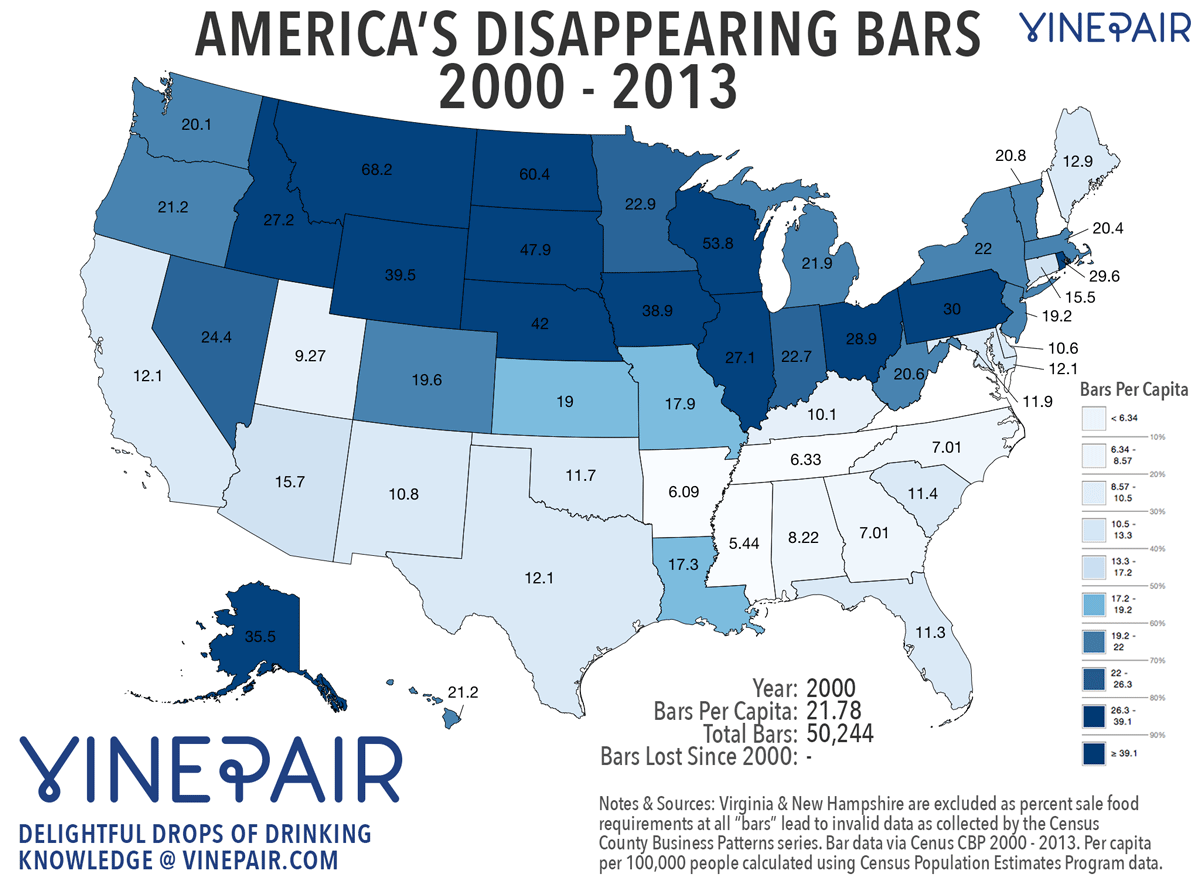Since 2000, America has been through two recessions, the first sparked by the dot-com implosion and the second spurred by the global financial crisis. It’s common knowledge that the booze business thrives during hard times. While that’s true, there’s a major catch. Where people drink when the economy goes south changes, even as sales generally rise. People flee bars and clubs to drink at home, which we can see in the rapidly declining number of bars from 2000 through 2013. America is far past the last recession, so why haven’t bars bounced back? There’s a second, larger trend that’s been happening for decades – neighborhood bars (as well as true dive bars) have been pressured by rising income inequality and gentrification. More on that after the map.
Bars are shown per state, per capita (100,000 people). Virginia and New Hampshire are excluded as accurate data could not be obtained.
Alexander Nazaryan wrote about this second trend for Newsweek in an article titled Yuppies Are Killing The Dive Bar:
All across the land, laments have been going up for dive bars in recent years, as beloved establishments pull their last pint, replaced by corporate outposts that are far more morbid than what they’ve replaced. This isn’t a trend; it’s an epidemic
Clint Lanier and Derek Hembree, writing for the Huffington Post clarify Nazaryan’s point:
The epidemic they discuss is, unfortunately, an almost natural progression. Most of these old, broken down bars are built in the less desirable neighborhoods of America’s cities. Over time, drawn by the low rent prices, these areas start attracting more trendy establishments willing to take a chance.
Then, young families and professionals begin moving in. Little by little the once decrepit section of town faces full-blown gentrification – it becomes the hot place to relocate.
Image via Lucie Lang / Shutterstock.com

